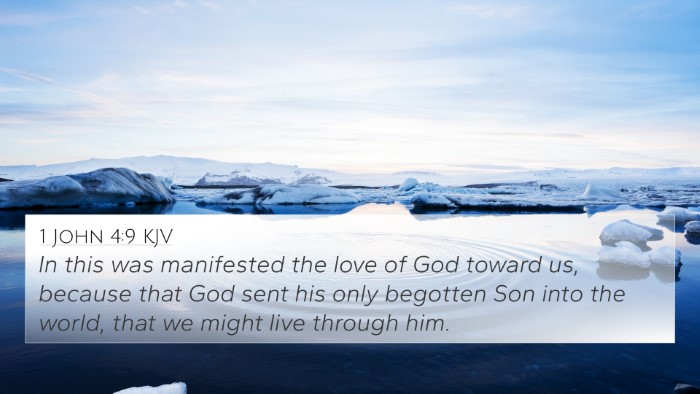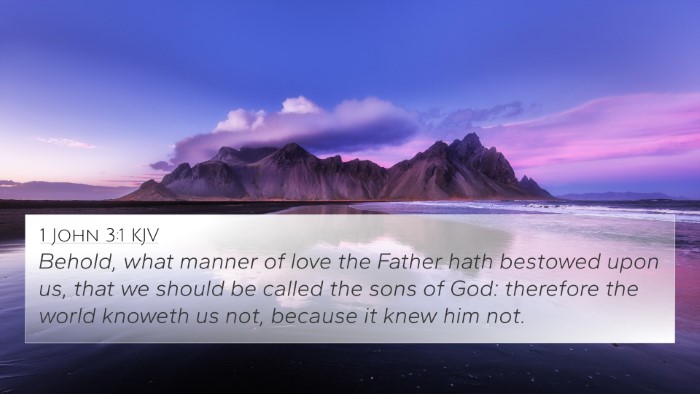Understanding John 11:36
Verse: "Jesus wept."
Context: John 11:36 is one of the shortest verses in the Bible, yet it holds profound theological significance. It comes at the moment when Jesus arrives at the grave of Lazarus, who has died. This verse captures the deep emotional response of Jesus to the suffering of humanity and the reality of death.
Meaning Summary
The commentary insights help us understand that John 11:36 speaks to the compassion of Jesus towards humanity.
- Matthew Henry: Henry emphasizes that Jesus' weeping reflects His genuine compassion and empathy for human suffering. He notes that this is not merely a show of grief, but a deep sorrow for the death of His friend Lazarus and the grief experienced by those who loved him.
- Albert Barnes: Barnes remarks on the significance of Jesus weeping as a demonstration of His human emotions. It was an expression of His solidarity with the suffering of others, highlighting that He, being divine, also understood the pain of loss.
- Adam Clarke: Clarke interprets Jesus' tears as indicative of His love and compassion. He suggests that this moment shows the reality of Jesus' incarnation, confirming that true divinity embraces true humanity, complete with the ability to feel sorrow.
Theological Implications
This simple yet profound statement encapsulates several theological themes:
- Empathy of Christ: Jesus enters into human sorrow, indicating that He is intimately aware of our pain.
- Divine Compassion: His reaction demonstrates that God is not distant from human suffering but engages with it deeply.
- Hope Beyond Grief: The context leading up to this verse is the miracle of resurrection, which demonstrates that grief is not the end. Jesus later raises Lazarus, showing victory over death.
Cross-References for John 11:36
To gain a more comprehensive view of the emotional and thematic connections in the Bible regarding grief, compassion, and the nature of Jesus, the following verses can be referenced:
- John 11:25-26: "Jesus said to her, 'I am the resurrection and the life...'" - Announces His power over death.
- Luke 19:41: "And when he drew near and saw the city, he wept over it..." - Jesus weeping over Jerusalem shows His compassion for the lost.
- Romans 12:15: "Rejoice with those who rejoice, weep with those who weep." - Encouragement for compassionate living.
- Matthew 5:4: "Blessed are those who mourn, for they shall be comforted." - The assurance of comfort in mourning.
- Psalm 34:18: "The LORD is near to the brokenhearted and saves the crushed in spirit." - Affirms God's closeness to those in sorrow.
- Hebrews 4:15: "For we do not have a high priest who is unable to sympathize with our weaknesses..." - Highlights Jesus' understanding of human sorrow.
- John 14:1: "Let not your hearts be troubled..." - Jesus comforting His disciples amidst their sorrow.
Connections Between Bible Verses
Exploring connections between Bible verses enriches our understanding. For example, Jesus’ grief in John 11:36 connects to the themes of resurrection and hope presented in 1 Thessalonians 4:13-14, which assures believers of life after death.
Applications for Cross-Referencing
Utilizing a Bible concordance or cross-reference guide can enhance the study of such verses. Here are some tools and techniques:
- Tools for Bible Cross-Referencing: Utilizing a structured approach to identify themes and emotional expressions of God and His son.
- Bible Cross-Reference Guide: This can be particularly useful when studying themes such as grief, compassion, and resurrection.
- How to Use Bible Cross-References: Engage with the text by asking how different passages inform the understanding of Jesus’ compassion.
Conclusion
John 11:36 reminds us of the humanity of Jesus and invites us to link this to other scriptural instances where He expresses compassion and sorrow. By cross-referencing these emotional responses, we develop a deeper grasp of the themes of grief, love, and ultimately, hope that run throughout the Bible.











